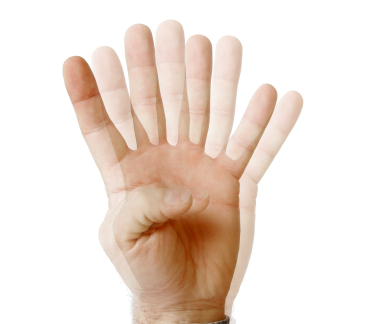 By Abby Newman SPT
By Abby Newman SPT
Have you ever had the feeling of being off-balance, lightheaded, dizzy, or that the room is spinning? What about ringing in the ear (tinnitus)? Do you have these symptoms when getting up from bed or a chair or with walking? Are you limited in your ability to perform simple daily tasks or movements because of dizziness or balance? Believe it or not, dizziness can often be easily treated by physical therapy.
Decreasing balance with age is a common problem, but is not a part of normal aging nor is it reserved only for the elderly. Balance is the result of the relationship between the visual system (eyes), the vestibular system (inner ear) and somatosensory system (skin sensations), and the musculoskeletal system (muscles and bones).
The vestibular system (inner ear), is a complex organ with 3 semi-circular canals, labyrinth and cochlea. The semi-circular canals contain liquid which sloshes around moving fine hairs at the base of the canals when you move your head. These hairs are hooked up to nerves, which tell the brain what position your head is in. From there the brain decides what muscles need activated to keep the head upright with respect to gravity. Otiliths are small organs within the inner ear which are sensitive to gravity and linear acceleration. These organs contain calcium carbonate crystals within a gelatinous matrix. These are the “little rocks” in your inner ear. The movement of these small crystals stimulate small hair cells connected to nerve which tells the brain head position.
A component of the somatosensory system is proprioception. Proprioception is the awareness of the body’s position in space. Through use of sensory receptors in muscle, tendon, joints and skin the brain maps the body’s position in relationship to gravity. Once the brain has received input about body position, it tells the muscles what adjustments if any need to be made to keep the body upright, balanced and protected. This all takes place in less than a second.
The musculoskeletal system contains sensory receptors within muscles, tendons and joints that give the brain information used to control balance or dizziness. The reaction time of nerves can diminish with age. Other ways getting older causes problems with balance and dizziness include arthritis, nerve compression, stenosis, or spurs in the cervical spine which are linked to changes in balance and dizziness. Taking multiple medications and blood vessel disorders can also create balance dysfunction, dizziness and cause falls.
What are some causes of dizziness problems that Physical Therapy can help?
-BPPV (Benign Paroxysmal Positional Vertigo)
Benign Paroxysmal Positional Vertigo is common, and typically easily treated with physical therapy. BPPV is caused by disruption of the fluid/ hair cell receptors in the semi-circular canal. With BPPV symptoms include: the sensation that the room is spinning, particularly when one rolls over in bed, dizziness with position changes. The spinning sensation lasts briefly (<1min) or can be persistent the entire time the head is in that position. There is are simple techniques a PT can use to help adjust the inner ear so it can function properly.
Infections can cause vestibular system hypofunction, which means that the system is not functioning correctly which results in balance problems, dizziness, nausea, and vomiting, impaired vision, and impaired hearing. Physical therapy can be used to re-establish proper communication between the vestibular system, vestibular nerve, brain and visual system. The exercises may consist of eye/head movements where you keep a target in focus while moving your head in different directions or at different speeds.
This is dizziness related to dysfunction in the neck and is usually accompanied by neck pain. It may be seen after a trauma such as a car accident. Physical Therapy can help by addressing the muscle tightness and joint mobility in the neck with manual therapy and exercise.
Balance can diminish with age due to changes in sensation, changes in musculoskeletal system, changes in how well your brain can process sensory information, gait, vestibular dysfunction, visual deficits and other complications such as arthritis and cognitive impairments. A physical therapist is skillfully trained to screen for impairments in all systems involved in balance, and create a treatment program to help you decrease dizziness and improve balance with manual techniques and exercise.